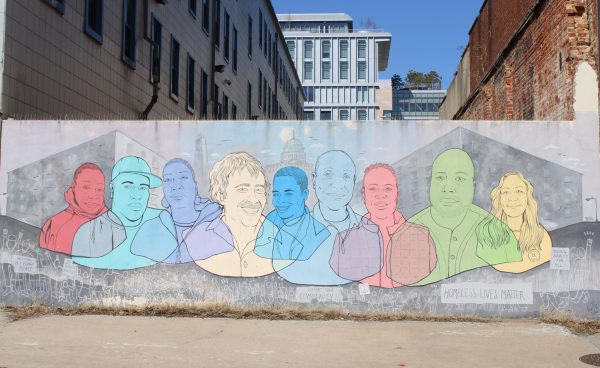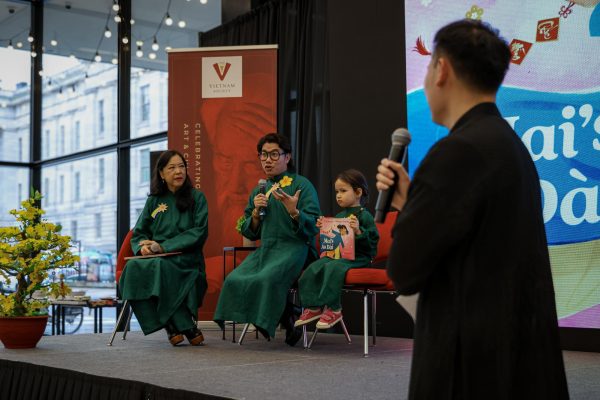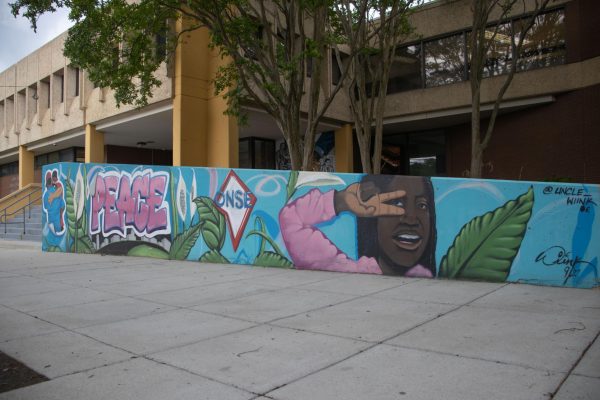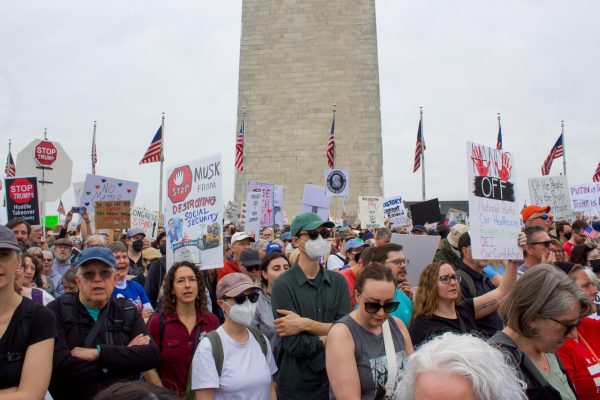Uncivil War
While the irony of a “patriot” threatening to overthrow his government may elicit a chuckle in some, gestures like these are representative of a frightening new development in American politics. Dissent has always been fundamental to the democratic process, but this new fire that has ignited under the far-right during Obama’s nascent presidency threatens to undermine American unity and derail dialogue efforts at a time when our nation needs it most.
Sam Hagedorn, treasurer for the AU College Democrats, appreciates the disputatious nature of American democracy, but expresses concern regarding these recent trends of discord.
“America has a tradition of lively — but civil — debate,” Hagedorn said. “Sometimes I worry we’re slipping away from that.”
From town hall outbursts to flamboyant picket signs, a number of the methods used to express dissent in recent months are anything but civil. There is a difference between questioning the policies of your president and questioning his legitimacy to govern. Barack Obama has been the target of an unprecedented number of these attacks, some of which contain undertones of violence. The ridiculous argument of the “birthers” that President Obama was in fact born in Africa preceded a deluge of subsequent, equally ludicrous accusations. He’s Muslim. He’s a terrorist. A communist. A fascist. Another Hitler. The only thread of cohesion uniting these accusations is the intent to make Americans fear their president. Which, given the gravity of the issues currently facing our nation and the world, is far from patriotic.
Michael Steele, the chairman for the Republican National Committee, took a different view in his debate with Harold Ford Jr. in Bender Arena earlier this year. According to Steele, such attacks are simply evidence that “the people have largely spoken” in expressing their discontent with the government’s “reckless” approach to health care reform.
The bitter partisanship of late has exacerbated existing trends of political polarization in America. According to Brookings Institution, the Washington-based think tank, modern trends of political polarization can be traced as far back as the civil rights movement. However, the ideological gap between Democrats and Republicans is currently at its “highest level in over a century,” and today there is “literally no ideological overlap between the parties.”
This is bad news for a nation sorely in need of solutions. New York Times columnist Thomas Friedman writes, “There is no more ‘we’ in American politics at a time when ‘we’ have these huge problems — the deficit, the recession, health care, climate change, and wars in Iraq and Afghanistan — that ‘we’ can only manage, let alone fix, if there is a collective ‘we’ at work.” At times, it can appear that partisan fervor has reduced important issues to political games of tug-of-war — what Paul Krugman has termed “politics of spite.” In this combative atmosphere of politics, the issue in itself seems to be less important than who “wins” and who “loses.”
After reading Farhad Manjoo’s True Enough, every AU freshman is aware that polarization in America stems in part from our existence in an information age. People tend to seek out like-minded opinions that reinforce existing world views. Today’s amazing chorus of voices on the airwaves and on the Web makes this process of self-validation easier than ever before. It wasn’t always this way. “There used to be a time when everyone watched Walter Cronkite. Everyone was seeing the same stories,” Sam Hagedorn said.
This polarization is, to some extent, a cultural phenomenon. The GOP base is overwhelmingly white and aging — according to a Gallup poll conducted in May of 2009, 89 percent of Republicans identify as white. Furthermore, a recent poll conducted by Pew Research Center reveals that Obama’s approval rating among white seniors is only 39 percent. According to SIS professor Gary Weaver, who teaches a course on cross-cultural communication, increasing political tensions are partly a reactionary cultural backlash to social evolution in America. For the white and elderly (especially male) contingent of the population, the election of a black president, combined with the social shifts of the modern age, is cause for alarm.
David Brooks, a conservative columnist for the Times, sees a similar cultural resistance but denies the importance of race. Instead, Brooks sees a modern populist movement in the vein of Thomas Jefferson and Andrew Jackson, characterized by familiar rhetoric “for the ordinary people and against the fat cats and the educated class; for the small towns and against the financial centers.” According to Brooks, Obama’s government of the “highly educated” was guaranteed to spark a populist backlash, and that such movements by nature are always “ill mannered, conspiratorial and over the top.”
Regardless of its causes, political polarization is dividing America. If we as a nation are to meet the challenges that face us, it is necessary for Democrats and Republicans alike to recognize that regardless of political affiliation, we are all driven by the desire to better America. Once this bridge is established, we may shift the tone of our national debates and replace detrimental hostility with spirited collaboration.
Shay Longtain is a freshman studying international relations.











